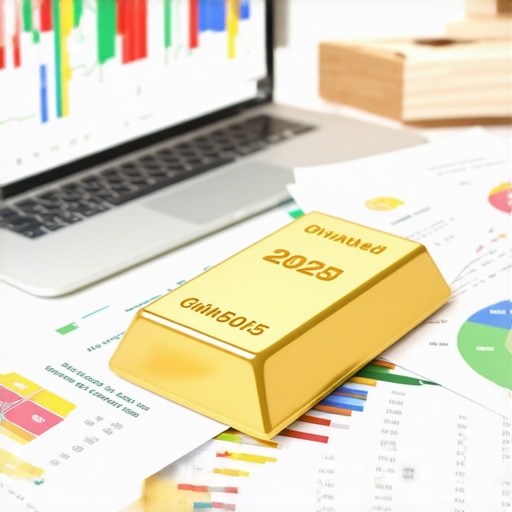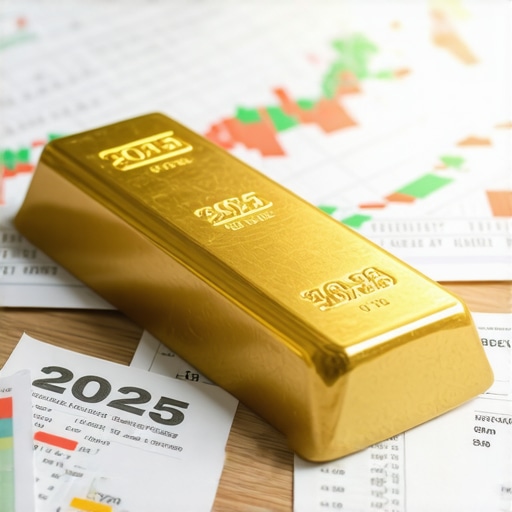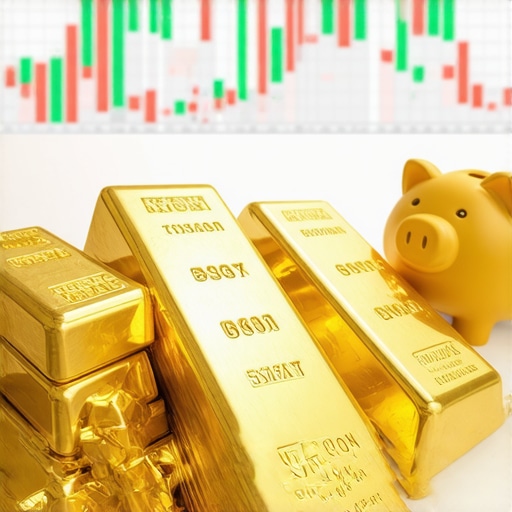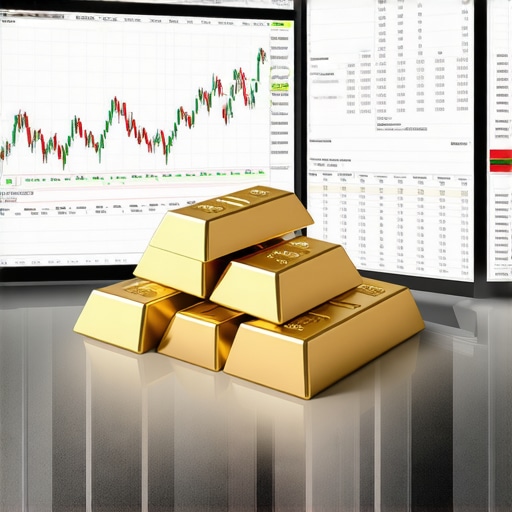Unveiling the Nuances of Gold Investment Vehicles for 2025: A Deep Dive into ETFs and Mutual Funds
As global economic uncertainties persist, sophisticated investors increasingly turn to gold-based investment strategies to diversify and safeguard their portfolios. The year 2025 presents a unique landscape shaped by geopolitical shifts, monetary policy adjustments, and emerging market demands, all influencing the performance of gold ETFs and mutual funds. This article synthesizes expert insights and market analytics to guide discerning investors through the complex terrain of gold investment options for diversified growth.
Why Gold ETFs and Mutual Funds Stand Out in the 2025 Investment Arena
Gold ETFs and mutual funds serve as pivotal instruments for passive income streams and risk mitigation. Unlike physical gold, these financial products offer liquidity, transparency, and ease of access, making them ideal for institutional and retail investors seeking exposure to gold’s intrinsic value. With 2025’s market volatility, understanding the underlying mechanics and strategic positioning of these funds is crucial for maximizing returns.
Emerging Trends Shaping Gold Fund Performance in 2025
Recent analyses highlight several factors influencing gold ETF and mutual fund performance, including central bank gold purchases, inflation hedge expectations, and global geopolitical tensions. According to a comprehensive market analysis, these elements catalyze shifts in gold demand and supply, impacting fund valuations. Notably, funds focusing on physically backed gold assets are gaining favor for their stability amidst fluctuating market sentiments.
How Do Gold ETFs and Mutual Funds Compare in Terms of Portfolio Diversification and Risk Management?
Expert portfolio strategists often evaluate the correlation of gold assets with equities and bonds to optimize diversification. Gold ETFs, particularly those tracking spot prices, tend to exhibit low correlation with traditional asset classes, offering effective hedging against systemic risks. Conversely, mutual funds with active management strategies may leverage market timing and sector rotations, providing tailored exposure aligned with macroeconomic forecasts. For a comprehensive approach, investors should consider blending both for a resilient portfolio.
For those contemplating entry into gold investments, developing a nuanced understanding of fund structures and market drivers is essential. Resources such as trustworthy Gold IRA options can further enhance long-term wealth preservation strategies.
Expert Recommendations for 2025: Navigating the Gold Investment Landscape
Building wealth through gold in 2025 necessitates a strategic approach grounded in market analysis and risk assessment. Investors are advised to monitor geopolitical events, inflation trends, and central bank policies, as these elements directly influence gold’s trajectory. Embracing a diversified portfolio that includes top-performing gold ETFs like SPDR Gold Shares (GLD) or iShares Gold Trust (IAU), alongside selective mutual funds, optimizes growth potential while managing downside risks.
In conclusion, mastery over the intricacies of gold ETFs and mutual funds can empower investors to harness gold’s unique properties for diversified growth. Continuous engagement with market insights and expert analyses remains vital for capitalizing on emerging opportunities in 2025.
Explore related expert content to deepen your understanding of gold investment strategies or share your insights with our community of financial professionals to foster collective expertise.
Harnessing the Power of Gold Funds: Advanced Strategies for 2025
As we delve deeper into the nuances of gold investment vehicles, it becomes clear that understanding the interplay between global macroeconomic factors and fund-specific strategies is vital for maximizing portfolio resilience. The landscape of gold ETFs and mutual funds in 2025 is shaped not only by traditional drivers like inflation and geopolitical tensions but also by innovative financial engineering, such as ESG considerations and digital asset integration.
How Can Investors Leverage Market Analytics for Optimal Gold Fund Selection?
Advanced investors often utilize comprehensive market analysis tools that synthesize macroeconomic indicators, supply-demand metrics, and technical signals. These analytics help in identifying emerging opportunities, such as undervalued physical-backed gold funds or ETFs tracking novel derivatives linked to gold futures. Moreover, deploying quantitative models that incorporate machine learning algorithms can refine timing and allocation decisions, reducing exposure to market volatility.
Are we underestimating the impact of central bank gold policies on ETF and mutual fund valuations?
Central banks continue to be major players in shaping gold prices through their gold purchase and sale strategies. Recent trends suggest a shift towards increased accumulation by several nations, which can bolster gold ETF valuations, especially those with a significant proportion of physical holdings. According to a comprehensive demand analysis, central bank actions are a critical component influencing supply-side dynamics and investor sentiment in gold markets. Recognizing these policies’ implications allows investors to anticipate shifts in fund performance and adjust their strategies accordingly.
For investors aiming to stay ahead, exploring trustworthy Gold IRA options and integrating them into a diversified asset mix can serve as a hedge against systemic risks.
What Practical Frameworks Can Enhance Your Gold Investment Approach in 2025?
Implementing structured decision-making processes such as the Gold Investment Framework (GIF) — which assesses macroeconomic conditions, fund structure stability, and liquidity metrics — empowers investors to make informed choices. Combining this with regular portfolio rebalancing based on real-time data and market forecasts, like expert strategies, ensures sustained growth and risk mitigation.
Engaging with analytical insights and maintaining flexibility in allocation are key to navigating the evolving gold landscape. For a comprehensive understanding of market drivers, consulting detailed reports such as market analysis is highly recommended.
Do you have innovative strategies or tools that have helped you optimize your gold investments? Share your insights or ask questions in the comments to foster collective learning.
Integrating ESG Factors and Digital Asset Innovations into Gold Investment Strategies for 2025
As the financial landscape evolves, so do the avenues for gold investment. Incorporating Environmental, Social, and Governance (ESG) considerations into gold ETFs and mutual funds is gaining momentum, reflecting a broader shift towards sustainable investing. According to a recent report by UNEP Finance Initiative, ESG-aligned gold funds are increasingly appealing to institutional investors seeking ethical exposure alongside financial returns.
Furthermore, digital assets and blockchain technology are revolutionizing how investors access and verify gold holdings. Tokenized gold, which leverages blockchain for transparent and secure ownership transfer, offers a novel layer of liquidity and traceability. As noted by Morgan Stanley’s research, integrating digital tokens with traditional gold assets could significantly reduce transaction costs and counterparty risks, creating a more efficient market ecosystem.
How Can Advanced Investors Leverage ESG and Digital Innovations for Portfolio Excellence?
To harness these emerging trends, investors should consider funds that explicitly incorporate ESG criteria, such as those screened for responsible sourcing and environmental impact. Simultaneously, exploring tokenized gold offerings allows for fractional ownership and 24/7 trading capabilities, which can be strategically timed based on technical analysis and market sentiment.
Combining ESG-focused funds with blockchain-enabled assets also facilitates portfolio transparency and compliance with evolving regulatory standards. For example, integrating a blockchain-tracked physical gold ETF with an ESG-screened mutual fund can balance risk and ethical considerations, aligning with socially responsible investing (SRI) principles.
For further insights, consult resources like S&P Global Ratings on ESG integration in commodity markets or emerging platforms like GoldToken for digital gold solutions.
The Role of Macro-Economic Indicators and Geopolitical Developments in Strategic Allocation
Advanced investors recognize that macroeconomic indicators—such as inflation rates, currency stability, and interest rate trajectories—are critical in timing gold fund entries and exits. Geopolitical tensions, trade policies, and central bank reserve adjustments create ripple effects that influence gold prices. As an example, recent analysis by IMF Working Papers emphasizes the importance of monitoring global monetary policy shifts and reserve management strategies, which directly impact gold demand and liquidity in ETFs and mutual funds.
Integrating this macroeconomic intelligence into quantitative models—such as Monte Carlo simulations or machine learning algorithms—can enhance predictive accuracy and enable dynamic asset allocation. This approach allows investors to capitalize on short-term market dislocations while maintaining long-term strategic positioning.
What Are the Practical Frameworks for Implementing a Responsive Gold Investment Strategy in 2025?
Developing a systematic framework, like the Gold Investment Optimization System (GIOS), involves establishing predefined thresholds for macroeconomic signals, technical indicators, and fund-specific metrics. Regular portfolio rebalancing based on real-time data—supported by advanced analytic dashboards—can mitigate risks associated with sudden market shifts or policy announcements.
Additionally, engaging with professional advisory services that utilize AI-driven analytics can provide an edge. These services synthesize complex data streams into actionable insights, ensuring your gold investment approach remains agile and aligned with evolving market conditions.
For ongoing education, consider subscribing to industry reports from organizations like World Gold Council or participating in expert webinars on integrating ESG and digital assets into precious metals portfolios. Your proactive engagement and continuous learning are vital to mastering the sophisticated landscape of gold investment in 2025 and beyond.
Harnessing Quantitative Models to Predict Gold Market Fluctuations in 2025
In the increasingly complex landscape of gold investments, leveraging sophisticated quantitative models such as machine learning algorithms and Monte Carlo simulations can provide a strategic edge. These tools analyze vast datasets including macroeconomic indicators, geopolitical events, and historical price patterns to forecast short- and long-term trends with higher accuracy. By integrating real-time market data into these models, investors can dynamically adjust their portfolios, minimizing risks and capitalizing on emerging opportunities. According to a detailed report by IMF Working Papers, the application of advanced analytics is transforming asset allocation strategies across commodities including gold.
What Role Do Geopolitical Events Play in Shaping Gold ETF and Mutual Fund Valuations?
Geopolitical tensions, trade disputes, and regional conflicts exert significant influence over gold prices due to their impact on global stability and investor sentiment. For instance, escalations in trade wars or regional conflicts tend to elevate gold’s appeal as a safe-haven asset, subsequently driving up ETF and mutual fund valuations. Analyzing news flow through natural language processing (NLP) algorithms allows investors to quantify the potential market reaction, enabling preemptive positioning. The World Gold Council emphasizes that understanding geopolitical risk factors is essential for crafting resilient investment strategies in precious metals.
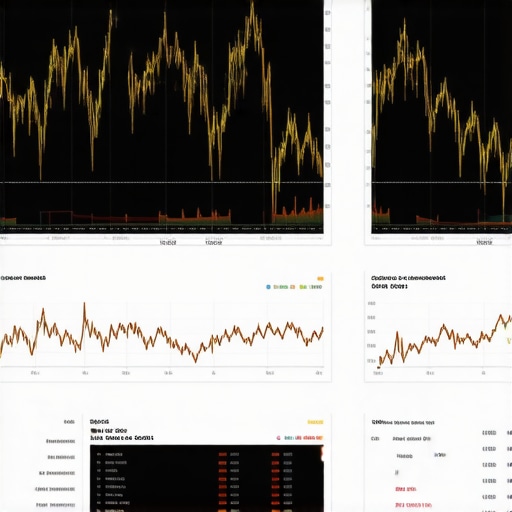
How Can ESG and Digital Asset Integration Revolutionize Gold Investment Portfolios?
Environmental, Social, and Governance (ESG) considerations are reshaping the gold investment landscape, with ESG-compliant funds gaining momentum among institutional investors seeking sustainable exposure. Incorporating ESG criteria into gold ETFs involves scrutinizing supply chain ethics, environmental impact, and corporate governance standards. Concurrently, blockchain technology facilitates the rise of tokenized gold, which offers fractional ownership, increased liquidity, and enhanced transparency. Morgan Stanley’s recent studies highlight that integrating digital gold tokens with traditional funds can significantly reduce transaction costs and counterparty risks, fostering a more efficient market ecosystem.
Investors aiming for a forward-looking portfolio should explore ESG-aligned gold funds and blockchain-enabled assets to balance ethical commitments with performance objectives. Consulting reports from S&P Global Ratings can provide deeper insights into the evolving regulatory landscape and technological innovations.
How to Build an Adaptive Gold Investment Framework for 2025
Developing a comprehensive, adaptive investment framework involves integrating macroeconomic indicators, fund-specific metrics, and real-time market analytics into a cohesive decision-making process. The Gold Investment Optimization System (GIOS), for example, emphasizes predefined thresholds based on inflation rates, currency stability, and geopolitical developments to trigger rebalancing actions. Employing AI-driven advisory services that synthesize complex data streams can further refine timing and allocation, ensuring that portfolios remain resilient amid volatility. Regular portfolio reviews, supported by dashboards from leading analytics providers, reinforce strategic agility.
For continuous learning, subscribing to industry-leading reports from World Gold Council and engaging in expert webinars on ESG integration and digital assets is highly recommended. Staying ahead in the gold investment game requires persistent innovation and analytical rigor.
Expert Insights & Advanced Considerations
1. Central Bank Policies Will Continue to Drive Gold Demand
Monitoring central bank gold reserves and policies is crucial, as their accumulation strategies can significantly influence market prices and ETF valuations, especially in uncertain geopolitical climates.
2. ESG and Digital Assets Are Transforming Gold Investment Strategies
Incorporating ESG criteria and leveraging blockchain-based tokenized gold can improve transparency, ethical sourcing, and liquidity, aligning investment portfolios with future-focused standards.
3. Macro-Economic Indicators Are Key to Strategic Timing
Inflation rates, interest trends, and geopolitical tensions serve as leading indicators; integrating these into quantitative models enhances decision-making precision for gold allocations.
4. Quantitative Analytics Are Essential for Market Prediction
Employing machine learning and Monte Carlo simulations allows investors to anticipate market fluctuations and optimize entry and exit points, reducing risks and capturing opportunities.
5. Flexibility and Continuous Learning Are Vital
Regularly updating investment frameworks with insights from authoritative sources ensures resilience against volatility and aligns strategies with evolving market dynamics.
Curated Expert Resources
- World Gold Council: Offers comprehensive research and market analysis that informs strategic decisions in gold investments.
- UNEP Finance Initiative: Provides insights into ESG trends and responsible sourcing practices shaping future portfolios.
- Morgan Stanley Research: Discusses blockchain innovations and their impact on gold liquidity and transparency.
- IMF Working Papers: Analyzes macroeconomic trends and geopolitical risks affecting gold prices globally.
- S&P Global Ratings: Delivers authoritative evaluations on ESG integration and technological advancements in the commodities sector.
Final Expert Perspective
In navigating gold investment strategies for 2025, integrating macroeconomic insights, technological innovations, and sustainable practices is imperative. The evolving landscape underscores the importance of agility, continual education, and leveraging advanced analytics. For professionals seeking to deepen their expertise, engaging with authoritative resources like the market analysis reports and participating in expert forums can provide a decisive edge. Your proactive approach in adopting these insights will position your portfolio to capitalize on emerging opportunities while managing risks effectively.






